This post may contain affiliate links. Please read my disclosure policy.
Mason Jar Salads are a convenient way to meal prep a healthy lunch and in a portable to-go container. They’re very customizable with just a few tricks needed to ensure they stay fresh for the week ahead. We’re sharing our best tips for putting together make-ahead salads in a jar! Sponsored by my friends at Little Leaf Farms!
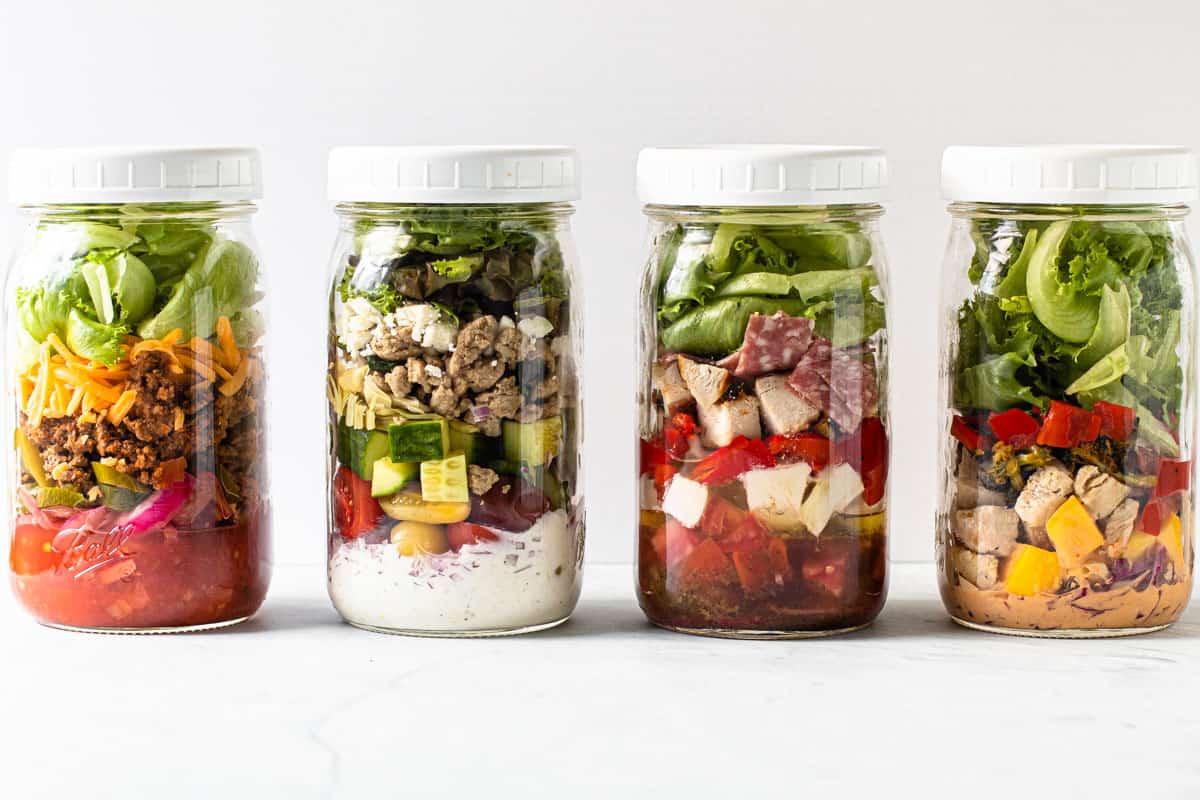
Salads in a Jar
Making lunches can often be overlooked when planning meals for the week, but we’ve all been caught hungry midday and left wishing we had something quick, delicious, and healthy to eat! Enter…mason jar salads! At first glance, you might be thinking it’s just some trendy way to serve a salad, but a salad in a jar is so much more than that. Because of the unique way of layering the salad vertically, it preserves the freshness of the salad for longer. Depending on the ingredients added, a make-ahead mason jar salad can last for up to 5 days. That means you can have lunch ready for the week ahead! You take it with you, and either mix and eat in your jar, or dump into a bowl, toss and enjoy!
It’s all About the Layers
Let’s dive right into what you need to know when putting together a mason jar salad. The first thing you need to know is that you can create your own salad recipe with what you have on hand or convert an existing salad recipe to a mason jar salad by simply layering in the ingredients appropriately.
Next, you need to know how to layer your ingredients. While there are some nuances in the order of how your salad is layered, the basic rule of thumb is that you want to layer your ingredients in terms of their moisture content, hardiness and density (as in–how heavy they are!).
Layer in the wettest ingredients first. And then in ascending order move all the way up factoring in how hardy an ingredient is (such as how absorbent they are) and how heavy they are. You want the heaviest ingredients to be at the bottom so they do not compact the salad.
Almost always the mason jar layered salad starts with the salad dressing and ends with the lettuce, and then what goes in between will depend on how each ingredient plays with one another.
Here is a general rule of thumb when it comes to layering a salad in a mason jar:
Layer 1: The salad dressing.
Layer 2: Hardy veggies or fruit with high moisture content, ascending in order of moisture and density (the wettest and heaviest on the bottom).
Layer 3: Softer veggies or fruit, ascending in order of moisture and density.
Layer 4: Protein (if using) or grains.
Layer 5: Cheese, seeds, nuts. Ideally this layer is a “dry” layer between the salad ingredients and the lettuce. It is best to not have anything wet touching the lettuce as that will cause it to wilt.
Layer 6: Greens / lettuce.
Again, depending on the density and moisture of your ingredients, you may layer them a bit different, so make changes where necessary.
Tips for Layering a Mason Jar Salad
Use a wide-mouthed mason jar, for easy serving of the salad. The regular mouthed jars are tricky to get the salad ingredients in and out of.
Quart sized mason jars make for a hearty single serving size portion. Pint jars don’t fit quite as much once you get the lettuce in, and would serve more as a light lunch or “side” salad portion.
The fresher your ingredients are to start, the better the salad will keep.
Use common sense when it comes to what to put in the salad, especially if you are planning to keep the salads in the fridge for a few days. An ingredient like tuna fish, or cut avocado or apples obviously will not keep as long in the fridge as cut peppers, onions or carrots do.
You can also use the method for packing a chicken salad or tuna salad and making it heartier by serving it alongside fresh lettuce.
P.S. We love these lids!
Ingredients for Mason Jar Salads
Any good salad must start out with the freshest lettuce, and for a while now I’ve been loving and buying the lettuce blends from Little Leaf Farms. Little Leaf Farms grows truly the best-tasting baby lettuce, that is grown locally on the East Coast. Their lettuce is grown hydroponically in a modern greenhouse that prides itself on sustainable growing practices that are both good for our environment and for our bodies.
You can notice right away that their lettuce is different because on the package it doesn’t say “triple-washed”. Instead, Little Leaf lettuce is “clean from the start”. Their non-GMO baby lettuces are grown without the need of being washed with chemical washing agents, such as chlorine since their lettuce is grown without dirt (hello hydroponics!) and human hands don’t ever come into contact with the lettuce. This means you get clean lettuce that hasn’t ever come into contact with any chemicals or pesticides.
Plus, I love how fresh and crisp the lettuce is, especially their Baby Crispy Green Leaf blend. It’s my go-to choice for mason jar salads since the texture holds up to anything you pair it with. Their Baby Red & Green Leaf blend and Baby Spring Mix works well for mason jars salads, too!
Little Leaf Farms lettuce is harvested and shipped to your local store in one day, so it stays fresh for two weeks or more, and this might be my favorite part about this lettuce. It makes it so easy to always have a box available for fresh salads since it keeps so well!
You can find Little Leaf Farms in all major grocery stores in the Northeast as well as on Amazon Fresh and Instacart. Check out their store locator to find one near you!
Long-Lasting Add-Ins for a Mason Jar Salad
Once you’ve got your lettuce picked out, it’s time to choose some of the other salad ingredients! As I said above, you can virtually turn any salad into a mason jar salad. But here are some nutrient-dense ingredients that will last the longest when made ahead of time. You can expect most ingredients to keep well for about 3-5 days.
- Hardy veggies: bell peppers, carrots, onions, cucumbers, corn, snap peas and many more.
- Proteins: Beans, grilled chicken, ground beef or turkey, or deli meat.
- Cheeses: Goat cheese, feta cheese, shredded cheddar cheese.
- Seeds and nuts: Hemp seeds, chia seeds, flax seeds, walnuts, slivered almonds and many more.
How to Serve Mason Jar Salads
And now the fun part! There are two ways to serve mason jar salads, and will probably depend on where you are when you are eating it.
You eat the salad right from the jar if you want! Just shake up the salad to mix it up, grab a fork and enjoy. This works well for an on-the-go lunch!
Or, if you are at home, go ahead and pour the salad into a bowl. You likely won’t need to toss it, since the dressing is coming from the bottom.
How Long Will Mason Jar Salads Last
This is largely dependent on the ingredients you add to the salad. Always start with the freshest ingredients possible. Because of the nature of how the salad is stacked, it can last for up to 5 days in the refrigerator.
Some ingredients like certain proteins (such as tuna or possible seared steak) might not last as long. Use common sense to decide what salad ingredients will keep the best. You can also check out this post about Leftovers as it gives a ton of tips about storing make-ahead and leftover foods!
Ideas for your Mason Jar Salads
Here are some of our favorite salad recipes that work well in a mason jar. Don’t forget to follow our tips for successful layering of the salads.
- Easy BBQ Chicken Salad
- Chicken Fajita Salad
- Mason Jar Thai Chopped Chicken Salad
- Sun-Dried Tomato Chicken Salad
- Chopped Antipasto Salad with Chicken
- Cheeseburger Salad with Mustard Dressing
- Southwest Tuna Salad
- Mediterranean Quinoa Salad
- Taco Salad
- Cranberry Walnut Chicken Salad
- Greek Lentil Salad
- Apple Dill Chicken Salad
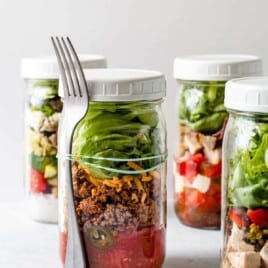
Mason Jar Salads
Ingredients
- Salad ingredients of choice!
Instructions
- Prepare all of your ingredients you plan to use in your salad.
Layer the salad in this order in a mason jar:
- Layer 1: The salad dressing.
- Layer 2: Hardy veggies or fruit with high moisture content, ascending in order of moisture and density (the wettest and heaviest on the bottom).
- Layer 3: Softer veggies or fruit, ascending in order of moisture and density.
- Layer 4: Protein (if using) or grains.
- Layer 5: Cheese, seeds, nuts. Ideally this layer is a "dry" layer between the salad ingredients and the lettuce. It is best to not have anything wet touching the lettuce as that will cause it to wilt.
- Layer 6: Lettuce.
- Place a lid on the mason jar and seal tightly. Store for about 3-5 days.
Notes
This post is sponsored by Little Leaf Farms! All thoughts and opinions are always 100% my own! I love the integrity of their products and think you’ll love them too. Thank you for continuing to support LCL and the brands I work with!



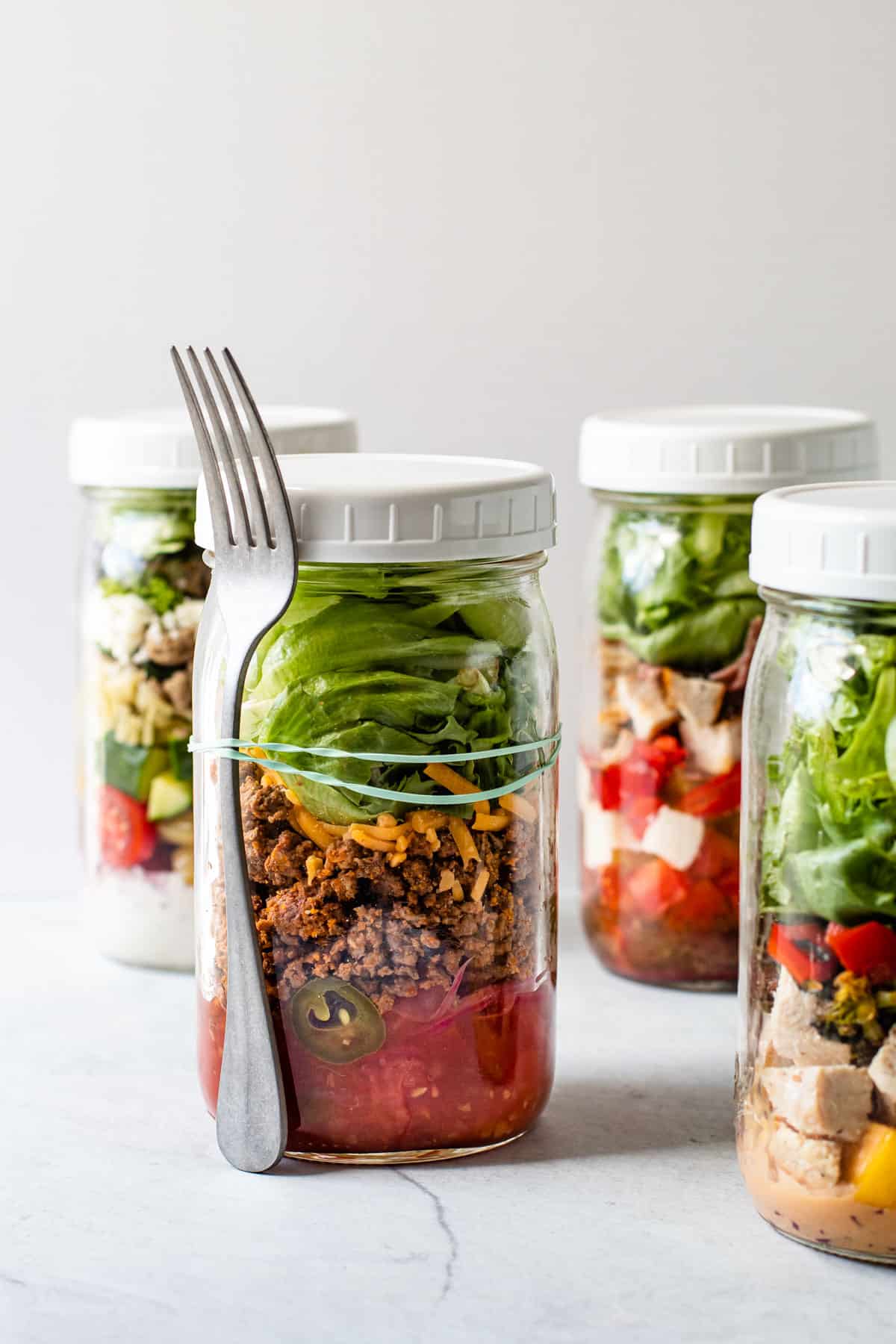

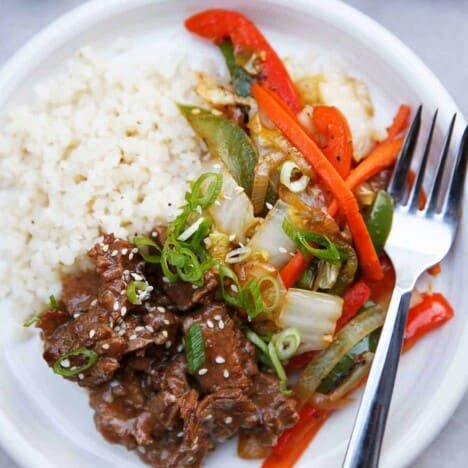

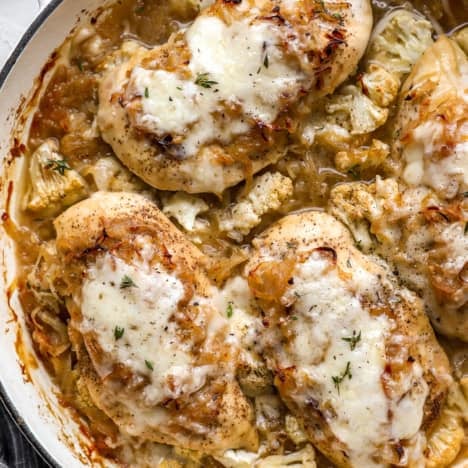


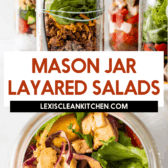
It is now that I learn of Mason jars and meal preps. I do not have a refrigerator. Is it possible to store them on shelf and how long would they last? This is just desperate me trying to find ways to actually save some of my ingredients.TIA
You definitely need a fridge to store these!
Salad in a jar, great
Question. You state mason jar, but what size?
32 oz!